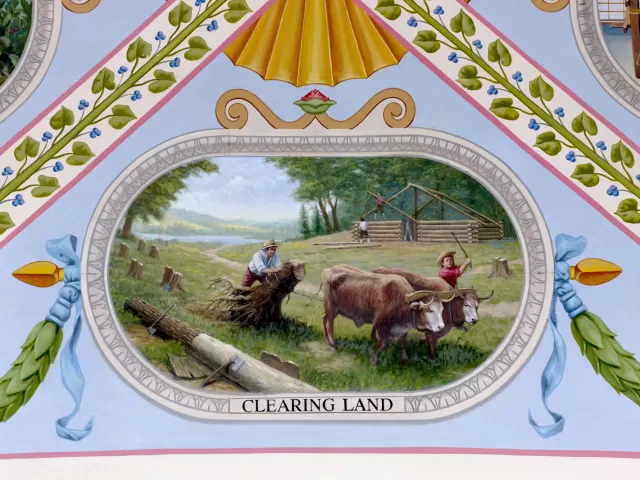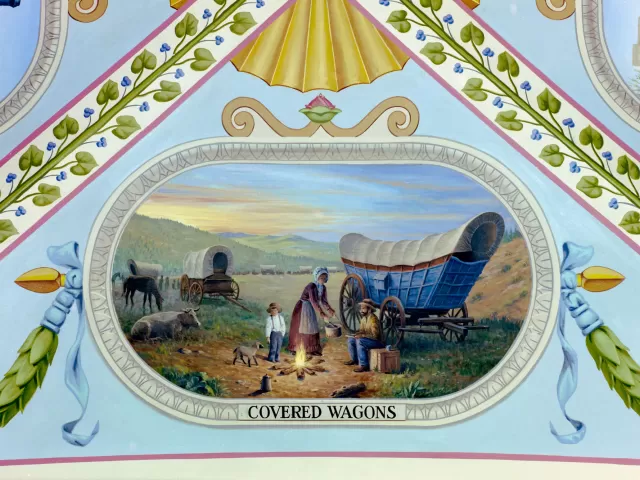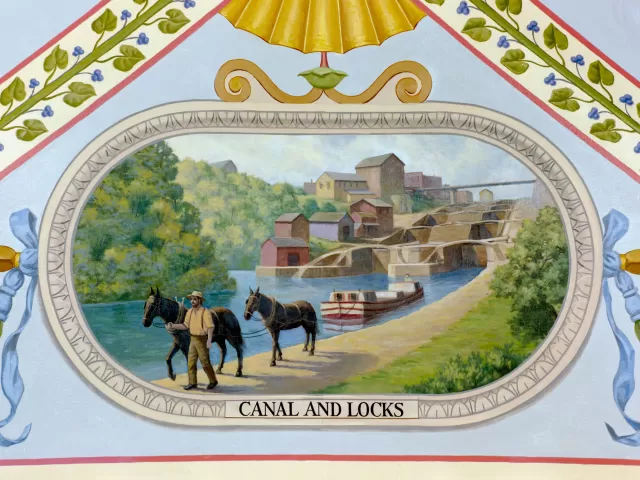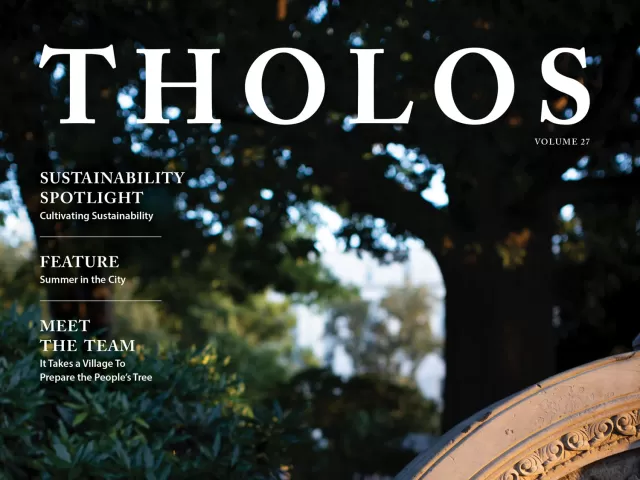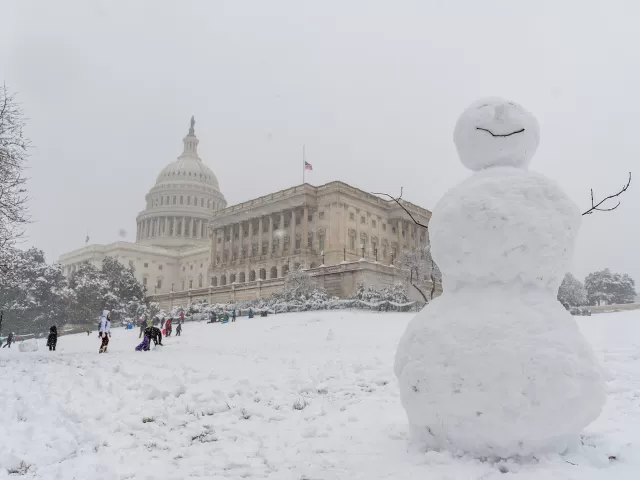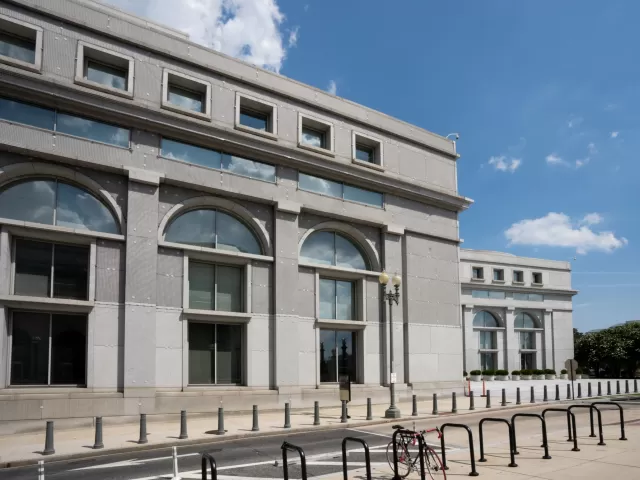Displaying 121 - 150 of 1010 Clear
Highlight
A converted Native American kneels in prayer under the guidance of a monk in front of the El Carmelo mission.
Highlight
A lone explorer in a canoe enters the picture, symbolically from the east.
Highlight
The third signing of the Louisiana Treaty, which occurred in New Orleans, is depicted.
Highlight
The explorers are shown on the Missouri river looking over a Mandan village.
Highlight
Boston Harbor appears in a moonlit scene, with people dressed as Native Americans throwing crates of tea from a boat; this famous event led to the Revolutionary War.
Highlight
This mural shows different methods used by prospectors in the search for wealth in California, the Yukon and Alaska.
Highlight
A typical prairie home is shown with a barbed wire fence, which represents the settlement of the great open plains.
Highlight
A couple picks cotton in the south with their cabin behind them and the plantation house in the distance.
Highlight
Riders are shown at the Hollenberg station, readying to switch ponies. In the background workers string cables for the telegraph, which would soon replace the Pony Express.
Highlight
This college building in Kansas was one of the first created under the 1862 Morrill Act, which was meant to ensure higher education for all classes of Americans.
Highlight
A village celebration with dancers and indigenous percussion instruments is shown in a typical Hawaiian setting.
Highlight
An unusual combination of dancers in Hopi and Navajo costumes performs a ceremony.
Highlight
At the connection of the Union Pacific and Central Pacific railroads in Promontory, Utah, two locomotives meet and two men shake hands before a group of workers.
Highlight
A longhouse of the northwest is decorated with paintings and set amid totems. Before the building, a fur trader is trading guns to the Native Americans for furs.
Highlight
Representing the Great Banks and North Atlantic fisheries, this vignette depicts salt bins, a rod shed, and a pier; a three-masted ship is seen offshore.
Highlight
Two settlers use a team of oxen to remove the stumps of newly felled trees while, in the background, others build a log hut next to an inland river.
Highlight
Two different types of covered wagons are shown, along with livestock and a family of settlers cooking a meal over an open fire.
Highlight
Along the Erie Canal at Lockport, New York, horses are shown pulling the barges that have just gone through the locks.
Highlight
The map shows the first thirteen colonies and the year in which each entered the Union. The original Northwest territories, the Connecticut Reserve, and Spanish and West Florida are also shown.
Highlight
On this map of the lands, an Eskimo hunts in a kayak; nearby seal and walrus represent the fur trade as well as the subsistence of the indigenous people.
Highlight
A map shows the islands now called Hawaii, which were annexed in 1898; an island native carries fruit in an out-rigger canoe with a cloth sail.
Highlight
The craft is shown as a family operation, with children carding the wool, a young woman spinning it, and an older woman operating a loom.
Highlight
The clock sits on a base composed of a wreath and fasces, a Roman symbol used throughout the Capitol that represents authority or law. In the early American republic, fasces also represented the strength of the states when united. The wreath below the clock face is made of laurel and oak branches
Public Notice
Article
Highlights include articles featuring the Architect's Citation Award winner, sustainability, summer internships and the U.S. Capitol Christmas Tree.
Public Notice
Article
This winter, sections of the U.S. Capitol Grounds West Front may be open for community sledding during daylight hours (dawn to dusk). Everyone is invited to join in the fun, but we ask that you remain safe and aware of the area and of workers who are clearing snow and ice. Keep these tips in mind
Project
Work to stabilize façade elements at the Thurgood Marshall Federal Judiciary Building has begun.



















